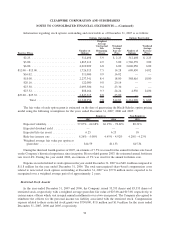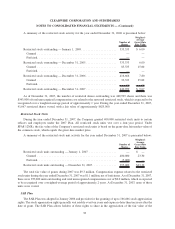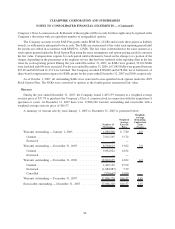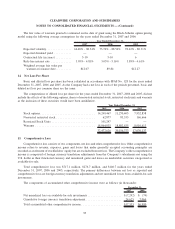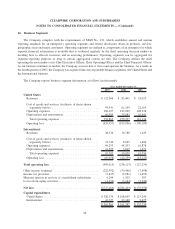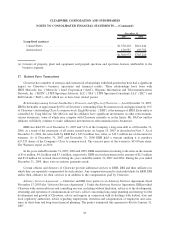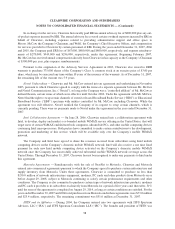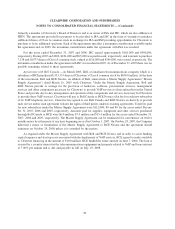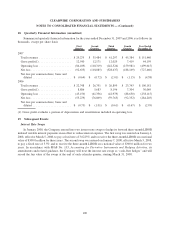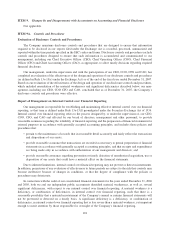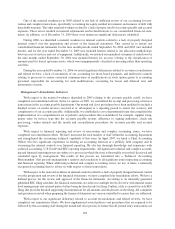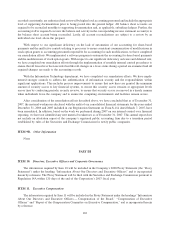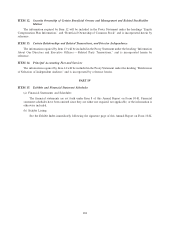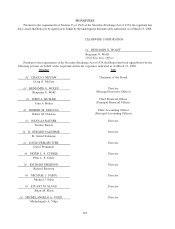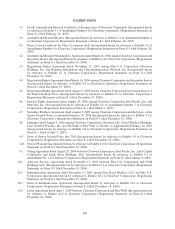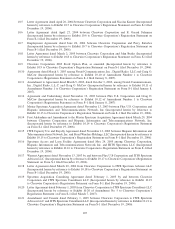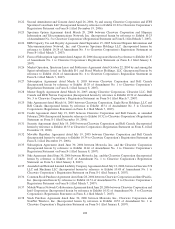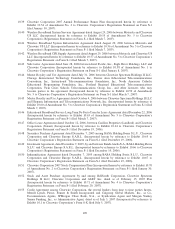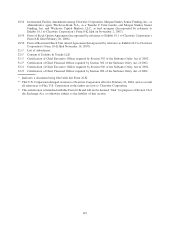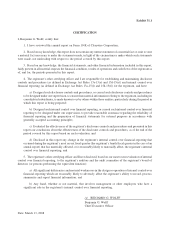Clearwire 2007 Annual Report Download - page 109
Download and view the complete annual report
Please find page 109 of the 2007 Clearwire annual report below. You can navigate through the pages in the report by either clicking on the pages listed below, or by using the keyword search tool below to find specific information within the annual report.ITEM 9. Changes In and Disagreements with Accountants on Accounting and Financial Disclosure
Not applicable.
ITEM 9A. Controls and Procedures
Evaluation of Disclosure Controls and Procedures
The Company maintains disclosure controls and procedures that are designed to ensure that information
required to be disclosed in our reports filed under the Exchange Act is recorded, processed, summarized and
reported within the time periods specified in the SEC’s rules and forms. Disclosure controls and procedures include
controls and procedures designed to ensure that such information is accumulated and communicated to our
management, including our Chief Executive Officer (CEO), Chief Operating Officer (COO), Chief Financial
Officer (CFO) and Chief Accounting Officer (CAO), as appropriate, to allow timely decisions regarding required
financial disclosure.
Our management, under the supervision and with the participation of our CEO, COO, CFO and CAO, has
completed an evaluation of the effectiveness of the design and operation of our disclosure controls and procedures
(as defined in Rule 13a-15(e) under the Exchange Act) as of the end of the fiscal year ended December 31, 2007.
Based on our evaluation of the effectiveness of the design and operation of our disclosure controls and procedures,
which included remediation of the material weaknesses and significant deficiencies described below, our man-
agement, including our CEO, COO CFO and CAO, concluded that as of December 31, 2007, the Company’s
disclosure controls and procedures were effective.
Report of Management on Internal Control over Financial Reporting
Our management is responsible for establishing and maintaining effective internal control over our financial
reporting, as that term is defined under Rule 13a-15(f) promulgated under the Securities Exchange Act of 1934.
Internal control over financial reporting refers to the process designed by, or under the supervision of, our CEO,
COO, CFO, and CAO and effected by our board of directors, management and other personnel, to provide
reasonable assurance regarding the reliability of financial reporting and the preparation of financial statements for
external purposes in accordance with generally accepted accounting principles, and includes those policies and
procedures that:
• pertain to the maintenance of records that in reasonable detail accurately and fairly reflect the transactions
and dispositions of our assets;
• provide reasonable assurance that transactions are recorded as necessary to permit preparation of financial
statements in accordance with generally accepted accounting principles, and that receipts and expenditures
are being made only in accordance with authorization of our management and directors; and
• provide reasonable assurance regarding prevention or timely detection of unauthorized acquisition, use or
disposition of our assets that could have a material effect on the financial statements.
Due to inherent limitations, internal control over financial reporting may not prevent or detect misstatements.
In addition, projections of any evaluation of effectiveness to future periods are subject to the risk that controls may
become ineffective because of changes in conditions, or that the degree of compliance with the policies or
procedures may deteriorate.
In connection with the audit of our consolidated financial statements for the years ended December 31, 2006
and 2005, both we and our independent public accountants identified material weaknesses, as well as, several
significant deficiencies, with respect to our internal control over financial reporting. A material weakness is a
deficiency, or combination of deficiencies, in internal control over financial reporting, such that there is a
reasonable possibility that a material misstatement of the Company’s annual or interim financial statements will
not be prevented or detected on a timely basis. A significant deficiency is a deficiency, or combination of
deficiencies, in internal control over financial reporting that is less severe than a material weakness, yet important
enough to merit attention by those responsible for oversight of the Company’s financial reporting.
101



